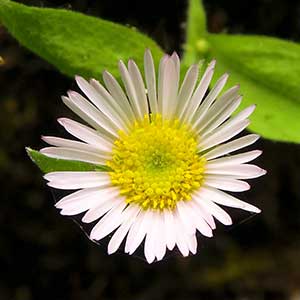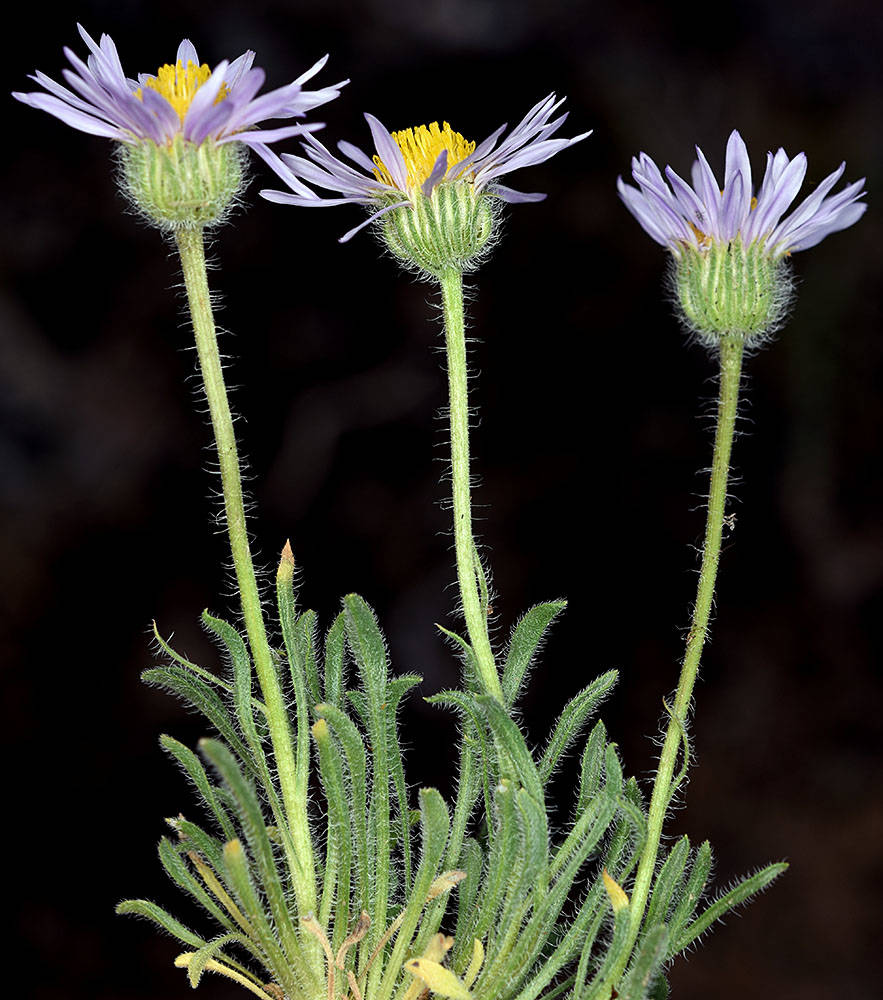Erigeron oreganus
Erigeron latus
Gorge daisy, gorge fleabane, Oregon fleabane
broad fleabane, Owyhee fleabane
decumbent to erect; hirsute with unequal hairs, sparsely glandular.
erect, sparsely to moderately hirsute, densely minutely glandular.
persistent, obovate, 15–90 × 5–20 mm;
margins coarsely serrate to shallowly lobulate;
surfaces sparsely to moderately hirsute to strigose.
persistent, narrowly oblanceolate to spatulate, 15–50 × 1.3–4.5 mm;
margins entire;
tips rounded to acute or acuminate;
surfaces moderately to densely hirsute to nearly hispid, minutely glandular.
obovate to elliptic; little or not reduced distally;
surfaces sparsely to moderately hirsute.
few, similar to basal, usually abruptly reduced distally.
4–7 × 9–15 mm.
6–9 × 13–21 mm.
30–60, pink to purple;
rays 4–5 × 0.5–1 mm.
20–35, lavender to purple;
rays 6–11 × 1–2 mm.
corollas 3–5 mm.
4–5 mm.
in 2–3 series, pale green with dark green medial stripe;
surfaces remotely hirsute, strongly stipitate-glandular.
in 2–3 series, with dark medial area, sometimes with orange stripe;
surfaces sparsely to moderately hispid-hirsute, densely minutely glandular.
2–3 mm, moderately strigose;
inner pappi of several unbarbed to weakly barbellate twisted bristles.
2–4 mm, glabrate to sparsely strigose;
inner pappi of numerous barbellate bristles.
1–4, radiate.
1, radiate.
Erigeron oreganus
Erigeron latus
Shady cliffs, rocky slopes, crevices. Flowering May–Aug. 100–400 m. Casc. WA. Native.
This uncommon species is found only in the Columbia River Gorge.
Open areas, sagebrush, streambanks. Flowering May–Jul. 1600–2000 m. Owy. ID, NV. Native.
Erigeron latus and E. poliospermus are very similar with the exception of the vestiture of the fruits. Further research is needed to determine if continued recognition of two distinct species is warranted.
James Riser, Stephen Meyers
James Riser, Stephen Meyers





